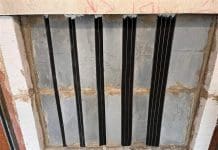Following the ‘Building a Safer Future’ consultation, BESA has urged the government to “embed a new culture and reshape the whole process for delivering both new build and refurbishment work”
The Building Engineering Services Association (BESA) has welcomed the government’s Building a Safer Future consultation and called for a series of tough new legislative measures as part of its response.
The Building a Safer Future consultation sought views on proposals for a radically new building and fire safety system centred on residents’ safety that followed Dame Judith Hackitt’s post-Grenfell independent review of building regulations and fire safety.
BESA called for an expansion of the proposed new safety regime beyond residential buildings above 18 metres to all types of buildings considered at high risk of fire. It proposed the mandating of automatic fire suppression to address the growing risk posed by more owners installing commercial kitchens and food retailers in buildings that also contain residential accommodation.
It said that all the new measures must be underpinned by a more robust focus on competence and compliance.
BESA chief executive David Frise, said: “This has to be more than simply adhering to a new set of rules – it is a chance to be far more ambitious.
“This is a unique opportunity to fundamentally change the culture of our industry; starting with clients being forced to feel their responsibilities in line with Dame Judith’s recommendations.
Frise added: “Every party involved in the design, installation, operation or maintenance of a building needs to take responsibility for their input, from the design consultant to installation contractor.
“This should be the accepted culture within the industry – delivered without compulsion, without hesitation and with complete transparency.”
BESA members played an active part in composing the association’s response to the Building a Safer Future consultation and many highlighted the need for complexity to be taken out of the procurement process to reduce confusion and minimise areas of dispute in supply chains.
They were also keen to ensure policymakers understood the importance of the whole lifecycle of a building so that assessing the competence of contractors working at all stages of the building’s life was a priority.
Frise commented: “Up to now, the discussion has been dominated by the design and construction professions.
“It is, therefore, welcome that the consultation included provision for the Hackitt recommendation that there be a ‘Golden Thread’ of digitally based information spanning a building’s life. This ultimately drives accountability and a focus on safety at all stages, from the beginning of the process through the entire lifecycle of a building.”
However, BESA challenged the proposal that BIM should be the preferred method for creating the Golden Thread pointing out that other less costly and complex digital methods were available.




![[VIDEO] Making DorTrak reports easy to read with Fireco Inspecting fire doors at Fireco, firedoor technology, 2023](https://www.pbctoday.co.uk/news/wp-content/uploads/2024/04/JPZ_2364-web-218x150.jpg)




![[VIDEO] UK-based firm reveals ‘world’s first’ fully AI-driven architectural project Studio Tim Fu has revealed the 'world's first' fully AI-driven architectural project in Slovenia, developing six luxury villas on the Lake Bled Estate](https://www.pbctoday.co.uk/news/wp-content/uploads/2025/03/Interior-1-studio-tim-fu-218x150.gif)



